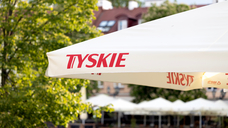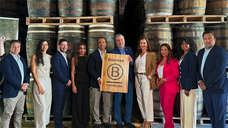Mexico’s RTD market is well-placed to benefit from the flavour boom that has swept through the country in recent years – and tequila-based RTDs are poised for a resurgence on the back of falling agave prices. Despite pressure on consumer spending amid a worsening economic backdrop, RTD volume growth in Mexico continued – building on the strong gains recorded in 2022, when category volumes rose by +12%, according to IWSR data. “Despite hefty price hikes due to the rising cost of raw materials, volume growth for RTDs in Mexico continues,” says Jose Luis Hermoso, Research Director for Central and South America, IWSR. “The category remains buoyant and is expected to continue to grow, driven by favourable demographics, expansion of the convenience retail channel, and strong investment from multinationals. These companies are now fully committed to developing the RTD category in a market that is increasingly mature.” IWSR forecasts show that RTD volumes in Mexico will grow at a CAGR of +5% between 2022 and 2027; however, the category will still represent less than 2% of TBA (total beverage alcohol) sales at the end of the forecast period, leaving ample headroom for future growth. Thanks to their accessibility, RTDs appeal particularly to the younger legal drinking population, with 64% of category consumers either Millennials (47%) or Gen Z (17%), according to IWSR consumer research.
For brand owners, category margins are tight and the barriers to entry are high, with longstanding RTD brands benefiting from their large volumes and maintaining market share. Local production is essential to keep costs down. Despite this, RTDs are relatively expensive in Mexico; on a per-serve basis, only wine costs more. “RTDs are generally double the price of beer per serve, and there is almost no innovation happening at the value end of the RTD market,” says Hermoso. “In the current context of squeezed disposable income and downtrading, new propositions at lower price points could appeal to some drinkers, luring them away from full-strength spirits and other more expensive options.”
Tequila-based RTDs lead the category in Mexico, preferred by 67% of RTD consumers (versus 51% for vodka-based RTDs and 45% for whisky). But, despite tequila’s status as a national icon, brand owners have been deterred from launching RTDs using the spirit by soaring agave prices and huge demand for tequila in the US. But this is changing now, in line with general market trends, says Hermoso: “High agave prices have discouraged innovation in tequila-based RTDs, while benefiting spirit bases that are cheaper to produce, such as vodka,” he explains. “The cost of agave is now falling, bringing more innovation in tequila-based RTDs, which continue to be in demand. This may lead to more activity in the value price segment.”
Hard seltzer launches had dominated the RTD innovation space in Mexico in recent years, but this is waning as the segment suffers from the non-rotation of items on-shelf. Too much supply – and too little demand – has resulted in unsold stock nearing its expiry date. Despite high levels of investment from big companies and evidence of consumers being open to trialling the products, hard seltzers simply haven’t taken off in Mexico, with IWSR forecasts predicting a steady decline in consumption between now and 2027. “Some hard seltzer brands have exited the market because of poor sales,” says Hermoso. “This RTD sub-category remains largely misunderstood by the vast majority of Mexican consumers.”




